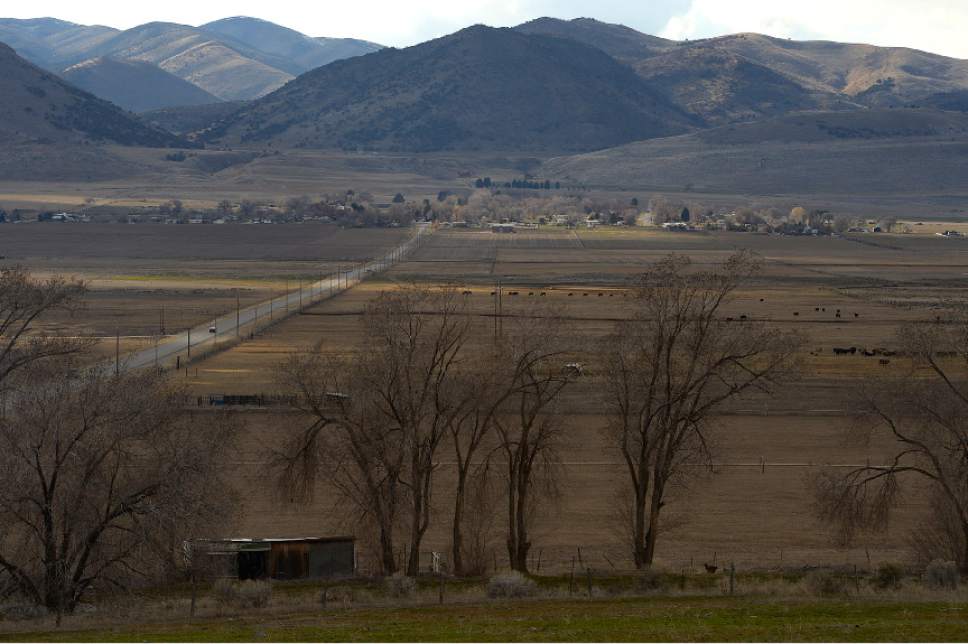This is an archived article that was published on sltrib.com in 2017, and information in the article may be outdated. It is provided only for personal research purposes and may not be reprinted.
Utah's largest electrical provider is floating a plan it says may eliminate need for the $1.5 billion Bear River water development project.
A spokesman for Rocky Mountain Power said Tuesday the company has a "very preliminary" plan for boosting storage at five existing dams that could provide northern Utah customers with enough water to meet their projected needs well into the future.
"Our hydrologists and plant managers have given a lot of thought to this new approach," Jack Kolkman, director of hydroelectric operations for Rocky Mountain Power, said in a statement. "But it is still conceptual at this point. The company is seeking to gauge interest and prompt ideas and input from all the stakeholders who have an interest in the Bear River/Bear Lake system."
The announcement is drawing cautious interest from state officials in charge of the Bear River water development — and outright hostility from at least one environmental group.
Without building additional dams, Rocky Mountain Power spokesman Dave Eskelsen said, the company would expand some of the smaller reservoirs it owns above Bear Lake. The plan also involves increasing the amount of water storage permitted at Bear Lake itself, decreasing the amount of water released from the lake and upstream reservoirs, and encouraging more water conservation.
"In 100 years of being involved with the system, we know it very well," said Eskelsen, "and we think that these changes might provide some benefits for everybody who depends on Bear Lake and the Bear River."
Rocky Mountain Power's plan would give it more flexibility in how it generates power at its Bear River facilities, the spokesman said. With additional water behind them, reservoir turbines could offer greater power generation capacity that could be brought on line quickly to help balance intermittent power supplies from renewable resources such as wind and solar.
A spokesman with the Utah Division of Water Resources, the agency tasked by the Utah Legislature with overseeing development of the Bear River, said the division is waiting for Rocky Mountain Power to provide additional details.
"We're just really focused on understanding the plan," said spokesman Josh Palmer. "But we are really interested in learning more."
Officials from the division announced earlier this year that the Bear River development project would likely be delayed due to decreased per-capita demand for water and new population projections.
Zach Frankel, executive director of the Utah Rivers Council, dismissed Rocky Mountain Power's announcement as "marketing hype" and questioned whether its plan differs significantly from the state's Bear River Project, which his group opposes.
Unless Rocky Mountain Power plans to leave more water in the river, he said, it's unlikely its proposal would be any better than the state's project for the ecosystems downstream.
"The big question is, how much air quality impact is Rocky Mountain Power proposing by lowering the Great Salt Lake? How many wetlands does Rocky Mountain Power plan to dry up? How many birds will die?" Frankel asked. "Another configuration of billions of dollars of costs is not an alternative. It's someone saying, 'I want to make money on that, too.' "
Twitter: @EmaPen



